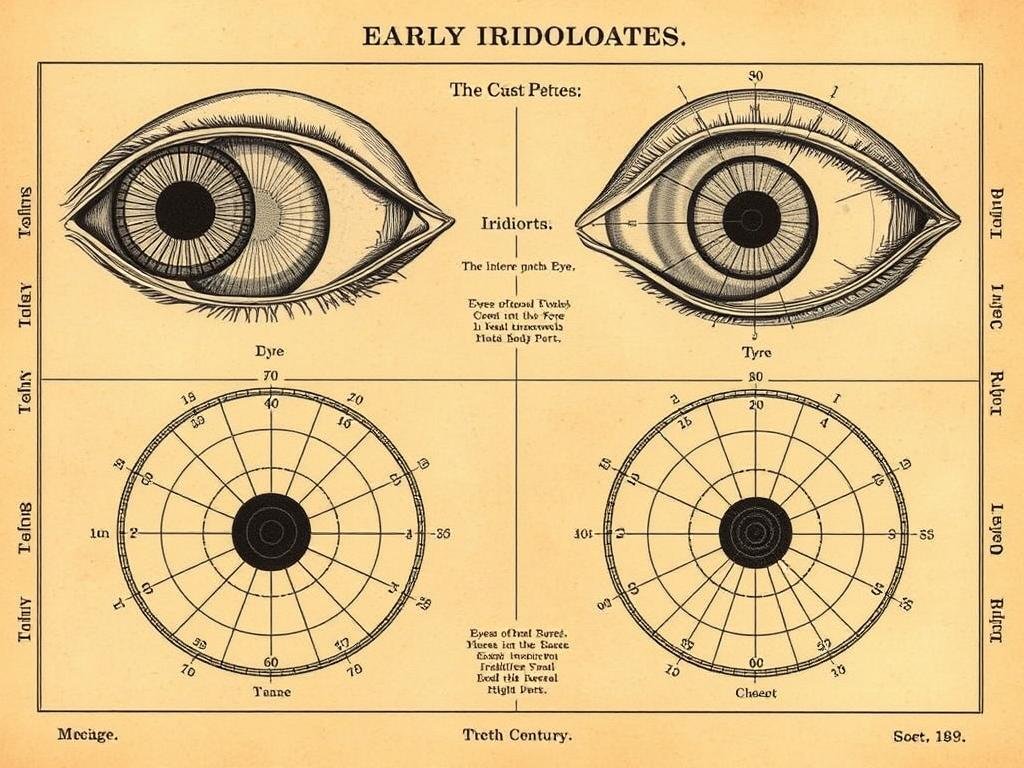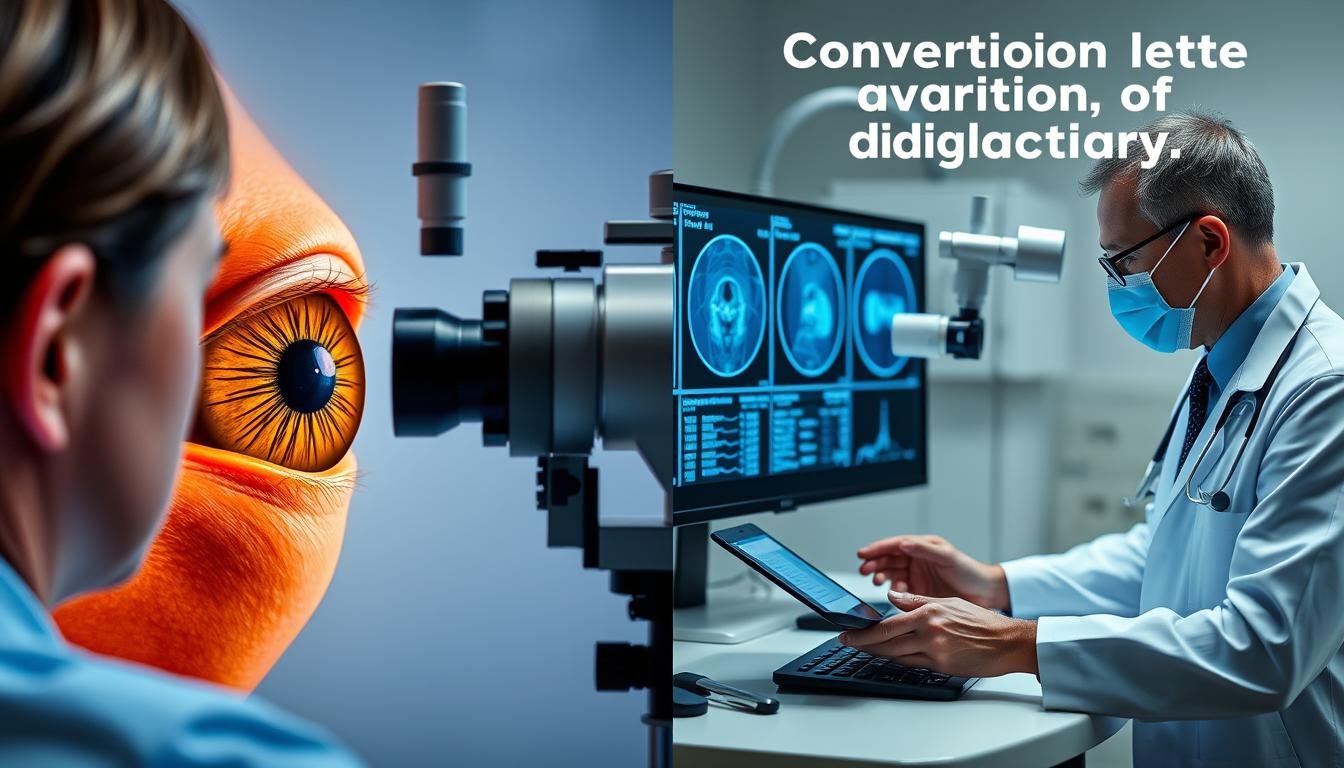Eye Iridology: The human iris—that colorful part of your eye—has fascinated health practitioners for centuries. Some believe it holds a map to your entire body’s health. This practice, known as eye iridology, suggests that specific patterns, colors, and markings in your iris can reveal information about your physical condition. But how much truth is there to these claims? This comprehensive guide explores the world of iridology, examining its historical roots, core principles, scientific standing, and practical applications.What Is Eye Iridology?

The iris contains intricate patterns that iridologists analyze for health insights
Iridology is the study of the iris, the colored part of your eye, to identify potential health concerns throughout your body. Practitioners, called iridologists, examine the patterns, colors, and other characteristics of the iris to detect signs of underlying health conditions. Unlike conventional medical diagnostics, iridology is considered a holistic, non-invasive approach to health assessment.
This alternative practice operates on the premise that each area of the iris corresponds to specific organs and body systems. Iridologists believe that changes in these iris regions can signal imbalances or problems in the corresponding body parts. While not intended to diagnose specific diseases, eye iridology aims to identify areas of weakness or stress in the body.
Historical Origins of Iridology

The roots of iridology stretch back thousands of years, with some evidence suggesting early forms were practiced in ancient Egypt, China, and India. However, modern iridology as we know it today emerged in the 19th century through the work of Hungarian physician Ignatz von Peczely.
As the story goes, young von Peczely accidentally broke an owl’s leg and noticed a distinct mark appear in the bird’s iris. This observation sparked his curiosity, leading him to study how injuries and illnesses might reflect in the iris. In 1880, he published the first modern diagramă de iridologie, mapping iris regions to specific organs and body systems.
The practice gained further development through the work of Swedish homeopath Nils Liljequist, who noticed changes in his own iris after taking medications. Throughout the 20th century, practitioners like Bernard Jensen in the United States and Josef Deck in Germany further refined iridology techniques and charts, contributing to its growing popularity as an alternative health assessment method.
Core Principles of Iris Analysis


Iridology chart mapping iris regions to corresponding body systems
Graficul de iridologie
At the center of iridology practice is the iridology chart—a detailed map dividing the iris into approximately 80-90 zones. Each zone corresponds to a specific organ or body system. For example, the top section of the iris might represent the brain and head, while areas near the pupil often correspond to the digestive system.
The right iris is generally associated with the right side of the body, and the left iris with the left side. This mapping allows iridologists to examine specific areas of the iris when concerns about particular body parts arise.
Ce caută iridologii
During an iris examination, practitioners look for several key indicators:
- Colors and pigmentation – Different colors may indicate various conditions or levels of inflammation
- Fiber structure – The arrangement of fibers in the iris can suggest constitutional strengths or weaknesses
- Marks and spots – Dark spots, white marks, or other anomalies may indicate specific health concerns
- Rings and zones – Circular patterns around the iris can suggest particular systemic conditions
- Texture changes – Variations in iris texture might reveal acute or chronic conditions
Common Health Claims Associated with Iridology
Proponents of eye iridology claim it can identify a wide range of health conditions and predispositions. While these claims remain controversial in conventional medicine, here are some of the most common health insights iridologists believe they can detect:
Physical Health Indicators
- Digestive system weaknesses and inflammation
- Congestionarea sistemului limfatic
- Circulation problems and cardiovascular stress
- Kidney and liver function issues
- Respiratory system sensitivities
- Dezechilibre hormonale
Evaluare constituțională
- Inherited genetic predispositions
- Overall vitality and energy levels
- Stress accumulation in specific organs
- Toxin buildup and elimination capacity
- Nervous system sensitivity
- Immune system strength
It’s important to note that iridologists generally don’t claim to diagnose specific diseases. Instead, they suggest that iris analysis can reveal areas of weakness or stress that might develop into health problems if not addressed. This approach aligns with preventative and holistic health philosophies rather than acute disease diagnosis.
Scientific Consensus and Criticisms
Susținătorii susțin
- Irisul conține mii de terminații nervoase conectate la creier
- Anecdotal success stories support effectiveness
- Non-invasive nature makes it risk-free to try
- May detect subtle imbalances before conventional tests
- Considers the whole person rather than isolated symptoms
Critici științifice
- Limited peer-reviewed research supporting claims
- Controlled studies have failed to validate diagnostic accuracy
- No standardized training or certification requirements
- May delay proper medical diagnosis and treatment
- Lacks biological mechanism to explain claimed connections
The scientific and medical communities generally view eye iridology with skepticism. Several controlled studies have tested iridology’s diagnostic capabilities with disappointing results. For example, a study published in the Journal of the American Medical Association found that iridologists could not consistently detect kidney disease by examining photographs of irises.
Eye Iridology: Critics argue that while the iris does change over time, these changes primarily reflect localized eye conditions rather than systemic health issues. The lack of standardized training and certification for iridologists also raises concerns about consistency and quality of practice.
Despite these criticisms, some researchers continue to investigate potential connections between iris characteristics and health conditions, particularly in the field of genetic markers and predispositions.
Comparing Iridology with Evidence-Based Diagnostics
| Aspect | Eye Iridology | Conventional Medical Diagnostics |
| Validare științifică | Limited peer-reviewed evidence | Extensive clinical research and validation |
| Abordare de diagnostic | Holistic assessment of potential weaknesses | Targeted testing for specific conditions |
| Invasiveness | Non-invasive visual examination | Ranges from non-invasive to invasive procedures |
| Pregătirea practicienilor | Variable, no universal standards | Standardized medical education and licensing |
| Concentrează-te | Prevention and constitutional tendencies | Disease identification and treatment |
| Insurance Coverage | Rarely covered | Typically covered by health insurance |
Eye Iridology: While conventional medicine relies on measurable biomarkers, imaging, and other objective tests, iridologie takes a more observational approach. Medical professionals emphasize that the eyes can indeed reveal certain health conditions—diabetes, high blood pressure, and liver disease can cause visible changes in the eye—but these are typically observed through comprehensive eye exams rather than iris analysis alone.
Many healthcare providers suggest that if you’re interested in iridology, it’s best used as a complementary approach alongside conventional medical care rather than as a replacement for evidence-based diagnostics.
How to Find a Qualified Iridologist
Eye Iridology: If you’re interested in exploring eye iridology, finding a qualified practitioner is essential. Since iridology isn’t regulated in the same way as conventional medicine, you’ll need to do some research to find someone with proper training and experience.
Qualifications to Look For
- Formal training from recognized iridology schools or programs
- Certificare from organizations like the International Iridology Practitioners Association (IIPA)
- Additional health credentials such as naturopathic doctor, chiropractor, or nutritionist
- Years of experience practicing iridology
- Client testimonials and reviews
Questions to Ask Before Your Appointment
- What type of training and certification do you have in iridology?
- How many years have you been practicing?
- What can I expect during an iridology session?
- What types of health issues do you commonly address?
- Do you work with conventional medical doctors?
- What are your fees, and what does a session include?
Remember that a reputable iridologist should never claim to diagnose specific diseases or recommend that you discontinue prescribed medical treatments. The best practitioners view their work as complementary to conventional healthcare rather than a replacement.
What to Expect During an Iridology Session
A typical iridology session follows a structured process to examine your iris and provide insights about your health. Here’s what you can generally expect:
- Initial consultation – The practitioner will ask about your health history, current concerns, and goals for the session
- Iris photography – High-resolution images of both irises will be taken using specialized equipment
- Examination – The iridologist will analyze the patterns, colors, and markings in your iris
- Mapping to the chart – Findings will be correlated with the iridology chart to identify potential areas of concern
- Discussion of results – The practitioner will explain what they observe and what it might indicate about your health
- Recommendations – You may receive suggestions for lifestyle changes, nutritional support, or further health investigations
Eye Iridology: Sessions typically last between 30 minutes to an hour, with costs varying widely depending on the practitioner’s experience and location. Some iridologists offer follow-up sessions to track changes in the iris over time as you implement their recommendations.
Frequently Asked Questions About Eye Iridology
Iridologia poate diagnostica boli specifice?
No, reputable iridologists do not claim to diagnose specific diseases. Instead, they identify areas of potential weakness or stress in the body. Iridology is considered an assessment tool rather than a diagnostic method. For actual disease diagnosis, you should consult with a licensed medical doctor.
Este iridologia acoperită de asigurările de sănătate?
In most cases, iridology sessions are not covered by conventional health insurance plans. However, some flexible spending accounts (FSAs) or health savings accounts (HSAs) might allow for alternative health consultations. Check with your specific insurance provider or account administrator for details.
How often should I have an iridology examination?
This varies depending on your health goals. Some practitioners recommend an initial assessment followed by a follow-up 3-6 months later to track changes. Others suggest annual examinations as part of regular health maintenance. Unlike the iris itself, which changes slowly, your health needs may evolve more rapidly.
Can iridology detect conditions before conventional tests?
Proponents claim that iridology can identify constitutional weaknesses and imbalances before they manifest as diagnosable conditions. However, there’s limited scientific evidence supporting this claim. While some practitioners report success in early detection, conventional medical screening remains the standard for early disease identification.
Does eye color affect iridology readings?
Yes, eye color can influence iridology analysis. Lighter-colored irises (blue, green) typically show more detail and are easier to read. Darker irises (brown, black) may require specialized equipment to reveal subtle patterns. Experienced iridologists are trained to work with all eye colors, though the approach may differ slightly based on pigmentation.
Balancing Perspective on Eye Iridology
Eye iridology remains a fascinating yet controversial field at the intersection of alternative and conventional health approaches. While scientific evidence supporting its efficacy is limited, many individuals report valuable insights from iridology sessions that have guided their health journeys.
As with many complementary health practices, the most balanced approach may be to view iridology as one tool among many for exploring your health. Consider it alongside, not instead of, evidence-based medical care. The eyes are indeed windows to aspects of our health—how much they reveal through iris analysis continues to be a subject of debate and discovery.
Whether you’re a skeptic or curious explorer, understanding the claims, limitations, and context of eye iridology can help you make informed decisions about incorporating it into your health practices.
Explore Iridology Further
Interested in learning more about eye iridology or finding a qualified practitioner in your area? Complete our information request form to receive a free guide to iridology resources and practitioner recommendations.
Request Free Iridology Guide












